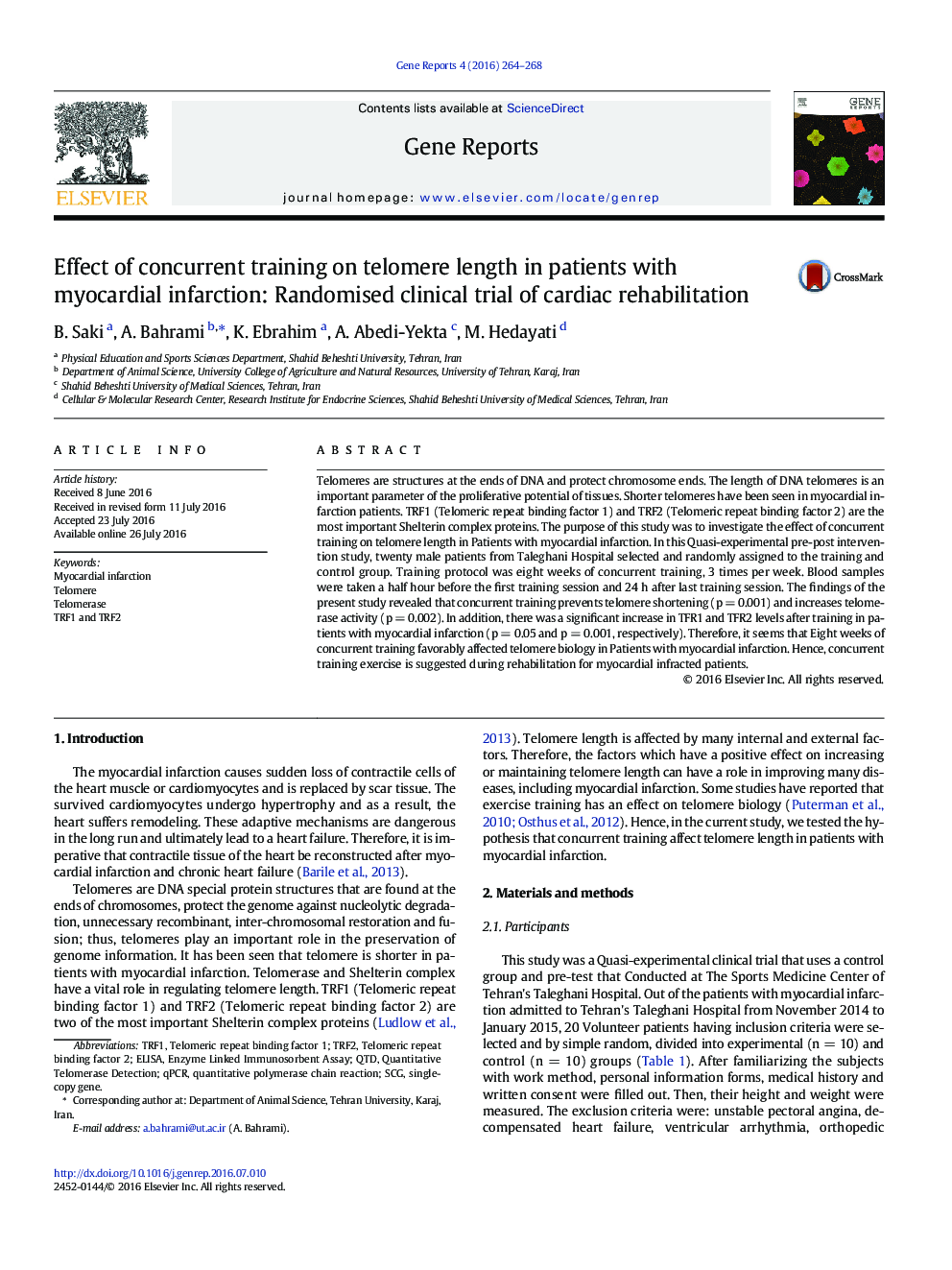| Article ID | Journal | Published Year | Pages | File Type |
|---|---|---|---|---|
| 2820512 | Gene Reports | 2016 | 5 Pages |
•Our evidence suggests that telomere length is affected by individuals' physical activity level.•Exercise training has been involved in the restoration of infarct heart.•We showed 8 weeks of concurrent training is effective on telomere length in the patients.•8 weeks of concurrent training has a positive effect on telomere biology.
Telomeres are structures at the ends of DNA and protect chromosome ends. The length of DNA telomeres is an important parameter of the proliferative potential of tissues. Shorter telomeres have been seen in myocardial infarction patients. TRF1 (Telomeric repeat binding factor 1) and TRF2 (Telomeric repeat binding factor 2) are the most important Shelterin complex proteins. The purpose of this study was to investigate the effect of concurrent training on telomere length in Patients with myocardial infarction. In this Quasi-experimental pre-post intervention study, twenty male patients from Taleghani Hospital selected and randomly assigned to the training and control group. Training protocol was eight weeks of concurrent training, 3 times per week. Blood samples were taken a half hour before the first training session and 24 h after last training session. The findings of the present study revealed that concurrent training prevents telomere shortening (p = 0.001) and increases telomerase activity (p = 0.002). In addition, there was a significant increase in TFR1 and TFR2 levels after training in patients with myocardial infarction (p = 0.05 and p = 0.001, respectively). Therefore, it seems that Eight weeks of concurrent training favorably affected telomere biology in Patients with myocardial infarction. Hence, concurrent training exercise is suggested during rehabilitation for myocardial infracted patients.
